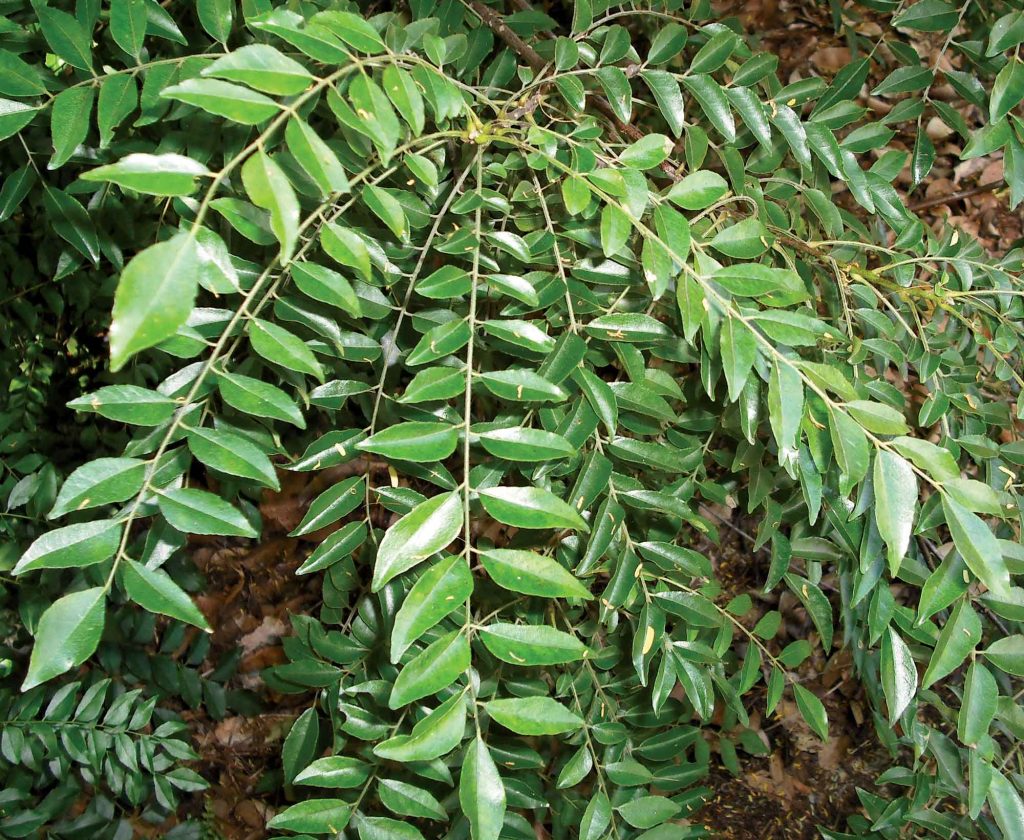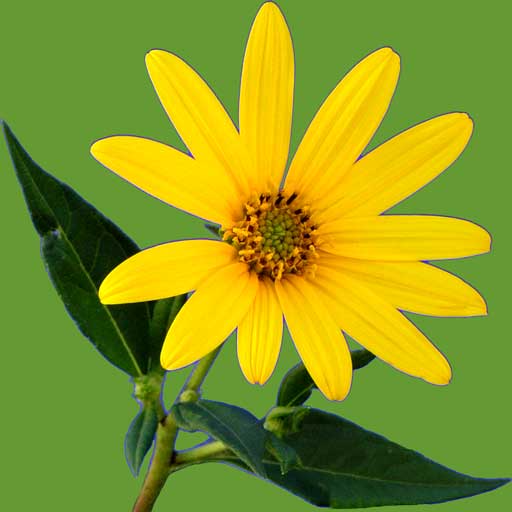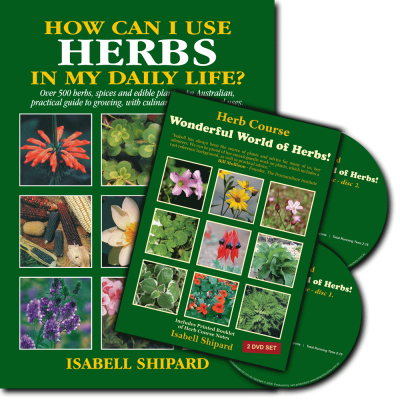Daun Kari, Bai Karee, Karapincha, Kari Patta, Sweet Neem, Kitha Neem, Kari Phulia, Nim
Murraya koenigii syn. Chalcas koenigii F. Rutaceae
Description
Curry leaf is one of my favourite spices, with its fern-like leaves that only need to be brushed against or gently touched to share their spicy aroma, with overtones of citrus and anise. The scent is so refreshing, that it instantly tantalises the taste buds. An attractive, upright, branching tree growing 2-5 metres (although I have seen one much taller that seemed to be heading for heaven, as it was planted beside a two storey house). Clusters of small, white fragrant flowers form in summer, followed by 1cm edible, shiny black berries. The curry leaf tree requires rich, well-drained soil in a warm, sheltered position, as it is a tropical to sub-tropical tree. With regular watering during dry times, the tree will flourish. The tree will adapt to warm temperate areas, and if wishing to grow it in colder climates, keep it in a large pot and move it to a warm verandah in winter. In cold areas the tree may go dormant in winter.
… … omitted text, please see How can I use HERBS in my daily life? for full text.

Culinary Uses
In the kitchen, use the leaves for a warm, appetising aroma and a subtle, spicy flavour with meat, seafood or vegetable curries, chutneys, pickles, coconut sauces, relishes, omelettes, marinades and vegetarian cuisine. The method of using the leaves (preferably fresh ones) in stir-fries and curries, is to heat some oil, butter or ghee in a pan, add the curry leaves along with a little ginger and garlic and sauté until brown. The flavour of the curry leaf is enhanced when fried. Fresh curry leaves will keep for a week if kept in a dry plastic bag in the fridge.
Curry powder does not come from the curry tree, as some people often think. Curry powder is usually a combination of many ingredients including ginger, chilli, black pepper, cumin, coriander, garlic, fenugreek, and turmeric to give the yellow colour. The proportion of each ingredient in the curry powder will depend on the tradition and origin of each particular recipe. However, crushed leaves from the curry tree are used as an ingredient in some Madras curry powders. The dried leaves add a spicy note to pot-pourri. Do not confuse the curry tree with the Curry Plant (Helichrysum italicum syn. H. angustifolium) (p 88) which belongs to the Asteraceae family. The curry plant is a perennial bush to 50cm with fine, silvery grey stems and leaves. A grey down covers the 4cm long narrow leaves and when rubbed they smell strongly of curry. Yellow button-like flowers form as terminal clusters. Propagation of the curry plant is by seeds, cuttings and root division. Grow in a well-drained area. Trim bushes regularly to keep them in good shape. Use the trimmings in pot-pourri. The dried flowers keep their colour for a long time. Add chopped young tender leaves to salads, cooked meat and savoury dishes.




